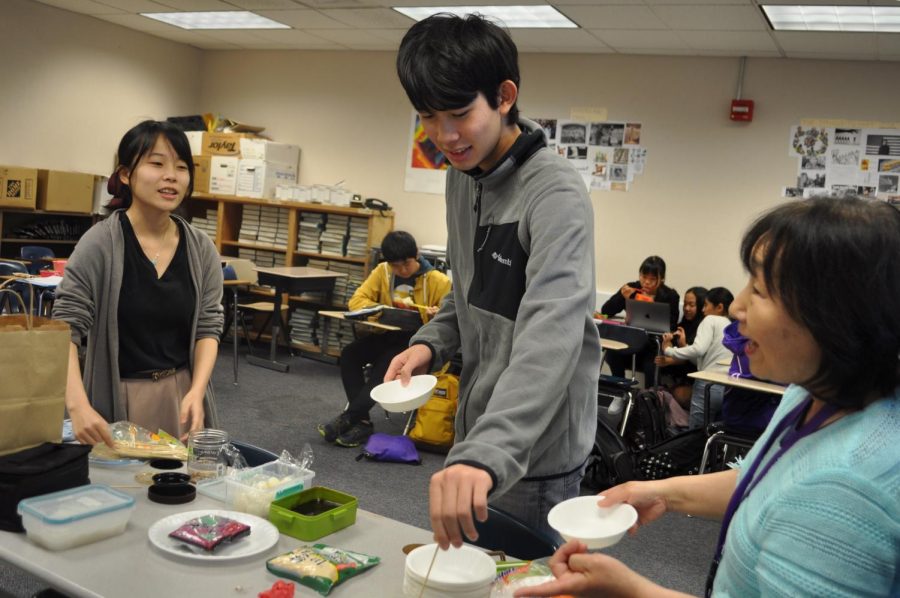Officers of Japanese Club illustrate what ‘dango’ means in Japanese tradition
The club serves sweet rice dumpling balls for its first food event
October 8, 2019
The officers of Japanese Club quickly start to unload boxes filled with small white rice balls and place different sweet and savory seasonings on the front table of club advisor Shozo Shimazaki’s room, alongside skewers and paper bowls. The officers serve themselves, and when members of the club start to trickle in, the ball-shaped dumplings rapidly disappear as attendees help themselves to seconds and thirds, combining the toppings in different ways to suit their personal tastes.
Dango is a Japanese dumpling delicacy made from rice flour and can be topped with a variety of flavored East-Asian seasonings. On Oct. 4, officers of Japanese Club made the dango and served the traditional sweet to its members as their first food event.
“Japan values seasons a lot — you can eat dango throughout the year if you want, but there’s a symbolic meaning to eat it in September during the full moon [as] that’s [the] arrival of the [next] season,” senior and co-president Taiga Asanuma said.
Asanuma explains the club was unable to hold the food event in September because it was too early in the school year, so they chose to hold it in early October for their first official meeting. Moreover, junior and officer Nagisa Yoshida says that eating dango is a Japanese tradition that correlates to the seasons.
“[Dango] doesn’t directly mean [something in] our culture, but it’s more [of] a seasonal occasion [or] a seasonal event,” Yoshida said. “Personally whenever I hear [the word] ‘dango,’ I imagine autumn, the moon season — all the supermarkets would be selling dango.”
At the meeting, the officers provided four seasonings: the first was mitarashi sauce, which consists of shoyu (soy sauce) mixed with sugar and starch to create a thick texture — Asanuma made the mitarashi sauce himself, which also happens to be his favorite type of dango. He claims the one he made is more or less in between savory and sweet, but a little stronger with the soy sauce. Other seasonings included red bean paste, sheets of dried seaweed and kinako (powdered soy beans) mixed with sugar, which were all store-bought.
“[Mitarashi is] the most fun flavor because it’s soy sauce and [it] also [has] some sweetness,” Asanuma said. “It actually varies throughout Japan, so in the Tokyo-Kanto region, they have a little more [of a] sweet mitarashi sauce but in the Osaka-Kansai area, they have a little more of the soy sauce so it’s a little more salty.”
Junior and co-vice president Rena Watanabe shares the same liking for the mitarashi dango, and says to eat it, “you dip it in [the] soy sauce and wrap it in seaweed.” Watanabe shares that she grew up making dango.
“At my school in Japan we used to make [dango] from the rice,” Watanabe said. “[We would] hand make the dango and [also] make it with our families,” Watanabe said.
Similarly to Watanabe, Yoshida also grew up eating the dumpling. While Yoshida now has the freedom to buy dango whenever she wants unlike when she was a child, she feels nostalgic when she eats it. Even though she doesn’t remember the taste now, she particularly liked sanshoku dango, because of its three colors: pink, white and green.
“I used to go to [a] Japanese elementary school, and we used to [get] school lunch,” Yoshida said. “Every single September we’d get dango for lunch one day and I remember that because it was super fun. I [would] look forward to it the whole entire year.”


















